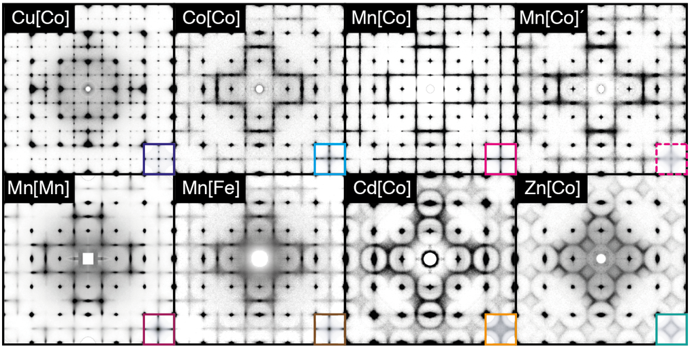Quantifying Order in Disordered Prussian Blue Analogue Crystals
Researchers from Laboratory for Multifunctional Ferroic Materials have found polymorphism of local order in Prussian Blue analogues.

Dr. Arkadiy Simonov (Disorder group & Laboratory for Multifunctional Ferroic Materials) in collaboration with group of Prof. Andrew Goodwin (University of Oxford) has investigated distribution of vacancies in Prussian Blue analogues and has found that, despite them being disordered on average, there is a surprising variation in their local order. The article is published in a recent issue of Nature.
Prussian Blue analogues are the chemical relatives of the famous bright blue pigment which was used to dye the uniform of Prussian soldiers. These materials are investigated for many possible applications including hydrogen storage and ion immobilization. They are easy to synthesize and cheap, but their performance is not very reliable and depends on subtle details of synthesys. The authors might have found the reason why.
Good absorption properties of Prussian blue analogues come from a high number of vacancies of hexacyanometallate ions which are present in these materials. The vacancies connect to form a disordered pore network which allows atoms and molecules to diffuse through the structure. It turns out that degree of disorder is important here. As vacancies order they tend to avoid each other and become less connected, this decreases the number of paths for ion motion, slows down diffusion and ultimately makes them less useful. In short, the more disorder the better.
The authors have investigated disorder using the single crystal diffuse scattering which showed the strong local order which is present in all grown crystals and was very sensitive to the chemistry of the crystals and the growth conditions. They have also developed a model which explained all this polymorphism by just two parameters. This model can now be used to deliberately design disorder into material to increase the adsorption properties.
Hidden diversity of vacancy networks in Prussian blue analogues.
Simonov, A., De Baerdemaeker, T., Boström, H.L., Gómez, M.L.R., Gray, H.J., Chernyshov, D., Bosak, A., Bürgi, H.B. and Goodwin, A.L., 2020. Nature, 578(7794), pp.256-260. external page DOI:10.1038/s41586-020-1980-y